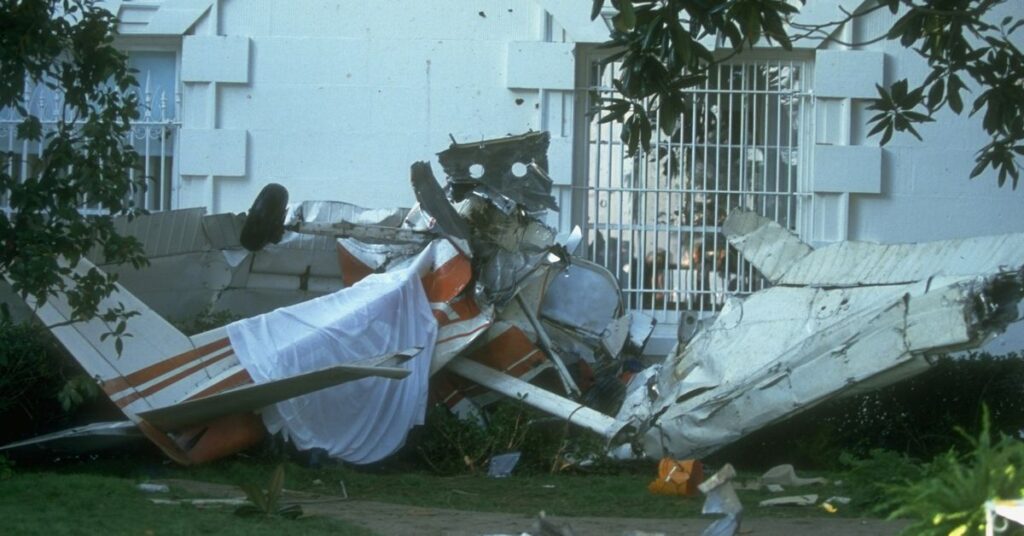
On September 12, 1994, a dramatic incident unfolded on the White House lawn when Frank Eugene Corder, a heavily intoxicated truck driver, crashed a stolen plane mere meters from the U.S. President’s bedroom. Corder, who was killed instantly, had taken off from a Maryland airport earlier that night, aiming to hit the White House but instead landing on its grounds just before 2 a.m.
President Bill Clinton and his family were not in the White House at the time. They were staying at the Blair House, the presidential guest house across the street, due to renovations at their usual residence. The aircraft’s impact occurred beneath the Clintons’ bedroom window, through a historic magnolia tree planted by President Andrew Jackson in 1829.
The Intentional Crash and Its Motivations
The National Transportation Safety Board concluded that Corder’s crash was intentional, citing the speed at which the plane hit the ground. While Corder had no political affiliations, his family speculated that he sought notoriety, inspired by the actions of German pilot Mathias Rust, who famously landed near the Kremlin in 1987.
Corder’s life had been unraveling; his trucking business had collapsed, and his third marriage was ending in divorce. His brother noted Corder’s lack of political engagement, stating he wasn’t even registered to vote. This personal turmoil likely contributed to his drastic actions.
Security Concerns and Historical Context
The crash raised serious security concerns within the Clinton administration. Officials were alarmed by how close Corder, with minimal flying experience, came to hitting the White House. Radar technicians detected the plane only minutes before the crash, and the Secret Service was alerted just seconds before impact.
Security experts noted that the Secret Service’s focus is on protecting the President rather than the building itself. “Our job is not to protect the building but the President,” a security official told the New York Times. The incident underscored vulnerabilities in airspace security around the nation’s capital, prompting reviews and potential policy changes.
Lessons Learned and Future Implications
This event marked a pivotal moment in the discussion of White House security. The proximity of the crash to the President’s residence, despite the Clintons’ absence, highlighted the need for enhanced surveillance and response measures. In the years following, security protocols have evolved to address such threats more effectively.
Reflecting on the incident, Hillary Clinton remarked, “It has been quite an unusual day here at the White House.” Her words encapsulate the shock and urgency felt by the nation in the wake of Corder’s actions.
As the incident fades into history, it serves as a reminder of the unpredictable nature of security threats and the continuous need for vigilance in protecting national leaders and landmarks.





